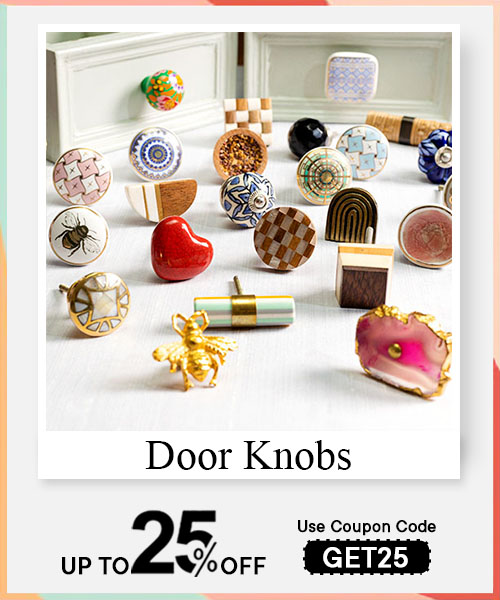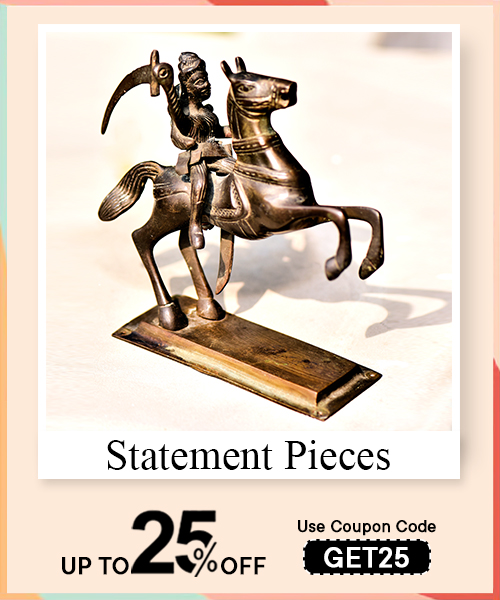Mixed media isn’t just a method it’s a philosophy an aesthetic rebellion. It dismisses the purity of singular mediums and embraces contrast conversation collision. Each surface becomes a battlefield of textures fabric meets graphite ink meets rust color meets silence. At its core mixed media art is about weaving visual tension into harmony where dissonant materials hum in unison. It is a multidimensional narrative where form and substance constantly negotiate where the painter becomes not just a maker but a curator of meaning. It's not chaos it’s calibrated unpredictability rooted in fine art but growing towards something that feels almost cinematic.
Mixed media in painting refers to the intentional use of more than one artistic medium in a single composition. It breaks away from the traditional confines of oil, watercolor or acrylic as standalone forms. In a mixed media work you might witness charcoal colliding with newspaper clippings or photographs drenched beneath resin or gesso textured surfaces kissed by metal foil. The essence lies in the artist’s manipulation of contrasts material surface texture transparency. It's not merely layering for aesthetics but rather layering for narrative depth. Mixed media seeks to amplify emotional resonance by letting mediums speak in chorus. It is as much about tactile emotion as it is about visual engagement a story told through friction absorption and juxtaposition.
Traditional painting whether oil or acrylic often emphasizes consistency in texture technique and material. Mixed media diverges from that pathway, it’s erratic pluralistic. Where traditional painting might work on canvas alone mixed media may move beyond to wood fabric or even three dimensional planes. A traditional oil painting might aim for a smooth blend or chiaroscuro a mixed media piece thrives in disruption paper ripped midframe threads hanging loose objects embedded like fossils. It offers not just color or brushstroke but grit fracture rust opacity. The act becomes not just about painting but assembling excavating composing. It values the imperfect the raw the interruptive.
Read More : The Ultimate Guide to Spray Painting: Tools, Techniques, and Surface Prep
Mixed media thrives on metaphor. Its multilayered structure mimics memory trauma joy, it mirrors life’s messiness. The juxtaposition of soft gauze beside sharp metal wire isn’t just an aesthetic decision it’s a statement. Texture becomes tone material becomes voice. It allows the artist to break silence or preserve it. Paint becomes skin paper becomes scar resin becomes memory trapped in amber. Unlike singular mediums that might speak in monologue mixed media composes a polyphonic narrative. Each element scratched scorched stained tells a different story. That’s what makes it so expressive it’s not confined to realism or abstraction but capable of being both simultaneously.
Mixed media is a tactile invitation. Acrylic becomes the base a skin to work upon. Gesso primes the chaos makes room for everything else. Then enters paper vintage torn tinted. Fabric sways in bringing softness stitch the whisper of memory. Resin captures time preserving moments like fossilized thoughts. Found objects rusted keys wilted petals broken watches each carry weight. Every material offers a different rhythm acrylic dries fast and loud fabric breathes metal moans under glue. The synergy of wet and dry mediums creates kinetic stillness. The textures don’t merely decorate they narrate. The canvas becomes less of a plane and more of a lived terrain.
A mixed media artist’s toolbox is expansive and unpredictable. Acrylic paint often forms the foundational layer due to its quick drying nature and versatility. Gesso is applied to prepare surfaces allowing other materials to adhere better. Paper tissue craft or vintage is widely used for collage or layering. Fabric introduces dimension and softness especially when sewn or embroidered directly into the surface. Found objects such as metal scraps twine photographs dried leaves and buttons infuse a tactile realism. Resin is poured for gloss and permanence encapsulating layers beneath a glasslike surface. Charcoal ink oil pastels even sand or soil can be incorporated. The selection isn't random it’s visceral intuitive. Each material is chosen not only for how it looks but for how it behaves how it resists or surrenders to others.
Texture is where the story lives. Smooth surfaces might suggest calm or sterility rough ones evoke trauma struggle erosion. In mixed media texture isn’t a background it’s the emotional architecture. Layers of thick impasto can symbolize buried feelings. Cracked surfaces resemble fractured timelines. Thread might mimic veins wire could evoke entrapment. Texture gives voice to silence it allows the painting to be felt not just seen. A viewer might run fingers across the canvas and experience resistance softness brittleness each a sentence in the painting’s unspoken monologue. Texture suspends motion in stillness makes the static dynamic giving each work a unique visual and emotional gravity.
Absolutely. In fact the interplay of wet and dry materials is at the heart of mixed media’s dynamism. Wet mediums like acrylic watercolor or ink can be applied over or under dry elements like charcoal chalk or paper. Timing is key. Wet on dry creates definition precision. Wet on wet allows for fusion bleeding edges. You can draw with pencil on dried gesso then overlay with washes of watercolor. Or embed dry paper beneath coats of glossy resin. However compatibility matters some materials may repel or degrade each other over time. Sealants fixatives and careful layering techniques are used to preserve integrity. The dance between wet and dry is more than technical it's thematic. It's tension release. Resistance surrender. When used thoughtfully this fusion can elevate the narrative complexity of the piece.
Mixed media is not a contemporary whim it’s an evolution born from artistic defiance. At the dawn of the 20th century artists began tearing at the canvas questioning its sanctity. Picasso and Braque fragmented reality with Cubism layering newspapers and wallpaper into painted scenes. Then came the Dadaists assembling nonsense from nonsense collage became protest assemblage became irony. As modernism gave way to the avantgarde mixed media emerged as the medium of discontent and innovation. It reflected a world fractured by war disillusionment and industrialization. What began as rebellion matured into recognition today it's a recognized language in galleries and contemporary art schools alike.
The roots of mixed media can be traced back to the early 20th century especially around 1912 when Pablo Picasso and Georges Braque began incorporating real world materials into their Cubist compositions. This marked the first intentional rupture of the painted surface. Collage a core mixed media method was born here with newspaper scraps music sheets and textured elements entering the painted world. The Dada movement shortly after further embraced mixed materials using randomness and readymades to challenge institutional art norms. However mixed media didn’t gain widespread recognition until the post World War II era when artists like Robert Rauschenberg and Jasper Johns blurred the lines between painting sculpture and object. These pioneers pushed boundaries allowing the canvas to breathe break and rebuild itself with every layer. It was both revolution and revelation.
Cubism laid the groundwork with its fragmented perception of reality and inclusion of paper and rope into paintings. But it was the Dadaists who weaponized mixed media into a critique challenging the elitism of art through absurdity. Surrealism followed merging dream imagery with found objects and symbolic textures. In the 1950s and 60s Abstract Expressionism and Pop Art brought further experimentation especially through assemblage and conceptual art. Robert Rauschenberg’s Combines merged painting with physical objects while Joseph Cornell’s boxes encapsulated memory as material. The Fluxus movement and later postmodernism dismantled remaining boundaries. These movements didn’t just influence mixed media they made it inevitable. They allowed the artwork to become a living object part poetry part relic part rebellion.
Picasso and Braque were the original disruptors. In their Cubist phase circa 1912 they introduced the concept of papier collé gluing pieces of newspaper wallpaper and other ephemera onto the canvas. This wasn’t just an experiment in texture it was a conceptual revolution. By integrating real world materials they shattered the illusionistic space that Western art had long revered. Their works were not windows into other worlds but mirrors of the fractured mechanized world they lived in. Braque’s Fruit Dish and Glass or Picasso’s Still Life with Chair Caning are early examples of mixed media brilliance. These were not just compositions they were philosophical statements. They questioned what is art What is painting And why must it remain confined to oil and brush Their innovation didn’t just add layers it unlocked the future of artistic language.
Mixed media transcends the canvas, it unearths layered memory and metaphor, fusing form with feeling. At its core, it’s a language of contrast and cohesion, where the artist disrupts uniformity to mirror complexity. Symbolism weaves through abstraction, allowing visual metaphors to breathe between textures, be it the coarseness of burlap or the transparency of tissue. Every stroke, tear, and overlay is intentional, carrying embedded emotion or societal reflection. It’s a dialogic dance, each medium engaging with the other in conceptual debate. Mixed media doesn't decorate; it dialogues, often holding contradiction in one frame. The emotional resonance lies not in clarity, but in collision.
Mixed media conveys depth not just through imagery but through material contradiction. Artists layer mediums, ink over canvas, graphite under wax, thread across acrylic, not as a stylistic decision but to externalize internal landscapes. Emotion emerges from the tactile: the grit of sandpapered cardboard expressing trauma, the delicate thread mimicking vulnerability. Symbolism appears as an echo, like burned edges suggesting memory loss or gold leaf evoking divinity. These works do not resolve tension; they enshrine it. Every material becomes a metaphor: gauze becomes healing, rust becomes time, mirror shards reflect fractured identities. Unlike monomedia, mixed media thrives on complexity, inviting viewers to excavate layers, each holding a different symbolic clue or emotive pulse. It offers no single truth but invites multiple readings. Through its layers, mixed media engages viewers in a slow unpeeling of meaning, emotion, and conceptual intensity.

Artists often turn to multiple mediums when a single one feels insufficient to house the complexity of their ideas. A concept may live simultaneously in texture, light, opacity, and form, none of which can be entirely captured by paint alone. Mixed media becomes a toolbox of contradictions: the soft over the hard, the ephemeral beside the permanent, the organic against the synthetic. Using collage, sculpture, drawing, and paint together allows for multidimensional storytelling. The layering is not decorative, it’s expressive. Each material performs a role in the emotional dramaturgy of the work. For example, a distressed newspaper might speak to historical trauma, while watercolor bleeding beneath might evoke fluid memory. The mediums hold tension, and that tension tells the story. This interplay builds a conceptual terrain that demands participation from the viewer, forging a shared act of decoding between artist and observer.
Themes in mixed media tend to orbit around fragmentation, memory, identity, political unrest, and the ephemeral nature of human experience. Because mixed media naturally allows for disruption and reconstruction, it lends itself to expressing dislocation, diaspora, and personal or cultural collage. Artists often explore time, both its erosion and its preservation, through decaying materials or archival imagery. Feminist narratives are explored through textiles, stitchwork, and domestic objects, reclaiming forgotten voices. Environmental concerns emerge through found materials, detritus, and organic forms. Psychological depth is rendered through translucent layers, blurred outlines, or hidden elements. There’s a strong leaning towards conceptual art where the message is embedded in the very choice of material: ash as grief, latex as impermanence, feathers as freedom or fragility. These themes evolve through method, medium, and material intertwining to evoke meaning that’s not immediately legible, but deeply felt.
Read More : What Is Pastel Painting? Techniques, Artists, and Expert Tips
Mixed media techniques are like building strata in emotional archaeology, each layer a fossil of intention. The painter doesn’t simply apply material but composes visual music through rhythm and resistance. Decoupage brings memory into the surface, impasto adds physical emotion, glazing suspends light within pigment, image transfers blur fact with fiction. The essence of technique lies in patience and strategic layering, knowing when to allow space and when to disrupt it. The canvas is not a surface, but a conversation between dry and wet, opaque and transparent, intention and accident. Layering in mixed media isn’t about aesthetics, it’s about revelation.
Creating a mixed media painting begins with conceptual clarity, what emotional or symbolic thread you wish to explore. First, select your base: paper, canvas, or wood panel. Then establish your foundational layer, this may be a wash of acrylic, collage of torn newspaper, or textured gesso to build terrain. Next comes layering: use techniques like image transfer, ink sketching, or impasto to form dimensional dialogue. Throughout the process, drying time is sacred, each layer must settle to avoid smudging or distortion. Incorporate contrast, gloss against matte, smooth against rough. Add elements like decoupage or graphite to deepen semiotic tension. Evaluate the work as a whole, mixed media is not a linear build but an ecosystem. Finally, unify or disrupt with sealing, using a fixative or varnish to preserve texture while maintaining rawness. Each step must honor the emotional arc of the work, not just its visual form.
Layering materials in mixed media is akin to orchestrating a delicate tension, you build without burdening. Begin with a primed surface: gesso not only provides grip but shields the canvas from acidity in glue or ink. Use lightweight materials in the initial stages, tissue paper, thin fabric, or watercolor. As you progress, introduce heavier textures like wood shavings, fabric, or impasto. Always adhere using archival, pH-neutral adhesives. Let each layer cure fully, rushing leads to buckling, bleeding, or cracking. Maintain a balance: the weight and texture of added elements should respect the tensile strength of the canvas. Use mediums like acrylic gel or matte medium instead of school glue, they dry flexible and bond strongly. Avoid oil-based paints under water-based ones, as they resist and peel. A mixed media canvas must be resilient yet responsive, and layering is successful only when each medium complements rather than competes with the surface beneath.
Sealing a mixed media piece is not an afterthought, it’s the final breath that binds the work. Begin by identifying all mediums used, charcoal, ink, acrylics, paper, fabric. Use a fixative spray for powdery or unstable materials like pastels or graphite before applying any varnish. Always test your sealant on a corner or mock version to check for reactions, some adhesives can yellow or warp thin paper. Use a UV-protective acrylic varnish for long-term preservation. Opt for a matte or gloss finish based on visual intent, matte for softness, gloss to highlight contrast. Apply in thin, even coats with a soft brush or spray, allowing full drying time between layers. Never seal a damp artwork, it traps moisture, leading to mildew or peeling. The sealant must enhance, not mute, the textures and depth. It is the final veil, a protective skin that doesn’t just preserve the art, but affirms its existence in the world.
Today, mixed media is not confined to canvas, it’s ambient, evolving, and often uncontainable. The boundaries between digital and physical blur, giving rise to hybrid forms like AI-assisted assemblages or eco-installations using biodegradable objects. Digital collage reinvents archival memory, AI-generated art questions authorship. Street art brings mixed media to public spaces, layering urban decay with painted protest. Found-object installations transform refuse into ritual. Sustainability and conceptual depth go hand in hand, contemporary mixed media is not only a mirror of the artist’s psyche but also of our fractured, tech-saturated, climate-conscious world. It’s a revolution unfolding in layers, both literal and cultural.
Technology is not merely an aid in contemporary mixed media, it is an extension of artistic voice. Artists are using digital tools to generate, manipulate, and print images that are later embedded into physical canvases. Techniques like digital collage, 3D printing, and augmented reality enable hybrid expressions that blend tactile and virtual dimensions. Photoshop and Procreate become sketchbooks. AI models now contribute as creative partners, offering suggestive patterns or formulating thematic moods. Projection mapping and sound layering extend the artwork into multisensory installations. Moreover, social media platforms influence composition, many artists now create with the grid in mind. Importantly, technology allows for broader accessibility and archiving, yet also raises questions of originality, authorship, and intention. In this dynamic landscape, technology doesn’t replace the hand, it redefines it, shaping a practice where brushstroke and byte coexist in poetic tension.
Emerging styles in mixed media reflect both our cultural fragmentation and our need for cohesion. Eco-art uses organic matter, moss, bark, recycled textiles, to comment on climate crisis. Digital-physical hybrids combine screen-printed pixels with acrylic gestures. Installation-based works are increasingly immersive, often inviting participation. Text-based assemblage, integrating poetry and protest slogans, speaks to rising socio-political engagement. AI-generated blueprints become springboards for human reinterpretation. Bio-art incorporates living organisms, fungi, bacteria, as symbolic and literal growth. Sculptural collages using discarded tech, urban waste, and e-waste build a language of critique. These forms reject permanence; they live, rot, evolve. The boundary between art and experience dissolves, what emerges is not just art, but an environment of encounter, one that repositions the viewer as co-creator, interpreter, and witness.
Sustainability in mixed media is evolving from aesthetic motif to foundational ethic. Artists are increasingly repurposing found materials, rusted metal, reclaimed wood, torn garments, single-use plastics, not for effect but to challenge consumption. The process itself becomes commentary. Natural dyes, biodegradable adhesives, and organic pigments replace synthetic alternatives. Eco-conscious artists often limit their palette to what is locally sourced, reducing carbon footprints. Many works are ephemeral by design, meant to decay, echoing cycles of life and death. Art fairs and galleries are also adapting, embracing carbon-neutral exhibitions and virtual showcases. The narrative of sustainability threads not only through materials but through concept, inviting viewers to reflect on waste, permanence, and their ecological footprint. Mixed media becomes an act of reclamation, of object, of space, of responsibility.
Mixed media artwork lives between fragility and resistance, it holds pigment, paper, textiles, glue, and found materials like a memory quilt stitched with time. Displaying such work isn't just about aesthetics; it’s about honoring layers, tactility, and temporality. Each piece, often nonuniform in depth and surface, demands a unique approach to conservation. Archival materials aren’t optional; they’re elemental. UV protective glass doesn’t just protect from sunlight; it shields from time. Varnish isn’t for sheen; it’s for permanence. Humidity, the silent enemy, can warp or wrinkle textures, unraveling the artist’s intention. Preservation, therefore, isn’t passive; it’s an ongoing dialogue between material and environment, stillness and air.
Framing a mixed media painting requires more than mounting; it’s a curatorial gesture. First, choose an archival, acid free mat or backing board. This prevents chemical leeching from deteriorating organic elements like paper or fabric. Avoid pressing glass directly onto the surface, especially if there’s texture or dimensional buildup; use spacers to create a breathing chamber. UV filtering acrylic or museum glass is ideal, blocking light degradation without introducing weight. Consider shadowbox frames for depth; this protects protruding elements and emphasizes sculptural qualities. Always seal the back with an archival dust cover to deter airborne pollutants. Framing isn’t just structural; it’s interpretative, it preserves intent.
Preservation begins at creation but continues indefinitely. First regulate temperature and humidity; ideal levels hover around 70°F with 50 percent humidity. Avoid sunlight and fluorescent lighting; both fade pigments and degrade adhesives. Use UV filtering varnish only if the piece allows; some materials may react chemically. Avoid aerosol sprays unless tested on similar materials. Install silica gel packets behind the frame to manage moisture levels. Store pieces vertically if unstretched; flat storage may distort heavier mixed layers. Gloves aren’t a luxury; they're essential when handling to prevent oil transfer. Preservation is about attentiveness, anticipating material fatigue before it becomes visible.
Read More : A Guide to Gouache Painting: Techniques, Tools, and Creative Uses
No mixed media artwork demands nuance in storage. Unlike oil or acrylic on canvas, these pieces often include volatile or sensitive materials, fabric, thread, metal, paper, that respond differently to pressure, light, and humidity. Traditional flat stacking or rolling can crush dimensionality or separate layers. Store vertically with interleaved acid free sheets if unframed. For framed works, avoid stacking entirely; pressure warps glass and damages texture. Label each with handling instructions and keep them in climate controlled rooms. If metal is involved, avoid high humidity to prevent oxidation. In essence, mixed media is an ecosystem of materials; store it as you would a memory, not an object.
















